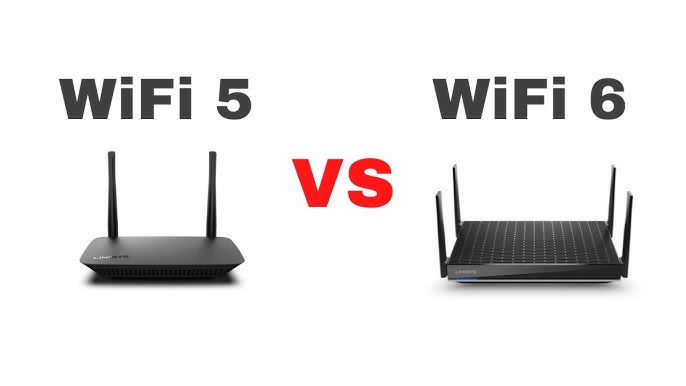WiFi has gone through many development steps in past years, and WiFi 5 (802.11ac) and WiFi 6 (802.11ax) are two major standards. Let’s explore their features and what really differentiates them from one another.
WiFi 5 (802.11ac): Overview
WiFi 5, introduced in the year 2014, became the mainstream of these many years. It focuses principally on the delivery of faster speeds and efficiency for devices that use the 5 GHz band.
Key Capabilities of WiFi 5:
- Maximum Speed: Up to 3.5 Gbps
- Frequency Bands: 5 GHz only
- MIMO (Multiple Input, Multiple Output): Supports up to 4 streams (MU-MIMO)
- Channel Width: Up to 160 MHz
- Modulation: 256-QAM (Quadrature Amplitude Modulation)
- Primary Focus: Faster speeds for fewer devices
WiFi 6 (802.11ax): Overview
WiFi 6 arrived in 2019 and is an enhanced version of WiFi 5, featuring better speed, efficiency, and performance in general, particularly in crowded networks. It works on both the 2.4 GHz and 5 GHz bands.
Key Features of WiFi 6:
- Maximum Speed: Up to 9.6 Gbps
- Frequency Bands: 2.4 GHz and 5 GHz
- MIMO: Supports up to 8 streams (MU-MIMO)
- Channel Width: Up to 160 MHz
- Modulation: 1024-QAM
- OFDMA (Orthogonal Frequency-Division Multiple Access): More efficient data transmission
- Target Wake Time (TWT): Best for battery life in connected devices.
- Key Focus: Speeds faster, efficiency greater, and better performance in dense networks.
Why Upgrade to WiFi 6?
- Smarter Speeds:
WiFi 6 provides much greater speed than WiFi 5, with maximum throughput of 9.6 Gbps. With WiFi 6, 4K/8K streaming and large file transfers are notably faster. - Better Performance in Crowded Networks:
WiFi 6 really shines in environments prone to connected device congestion, such as smart homes or the busy enterprise. OFDMA and MU-MIMO improve efficiency. - Longer Battery Life
It saves power consumption in the case of devices, especially for IoT and mobile devices, by using Target Wake Time (TWT). - Backward Compatibility
WiFi 6 routers will support WiFi 5 and older devices, making the transition of upgrades quite seamless.
Conclusion:
WiFi 6 is quite a great leap from WiFi 5 by virtue of speed, efficiency, and high performance across dense networks. WiFi 5 remains OK for light use, but an upgrade to WiFi 6 is worthy if one operates several devices or needs more bandwidth.








